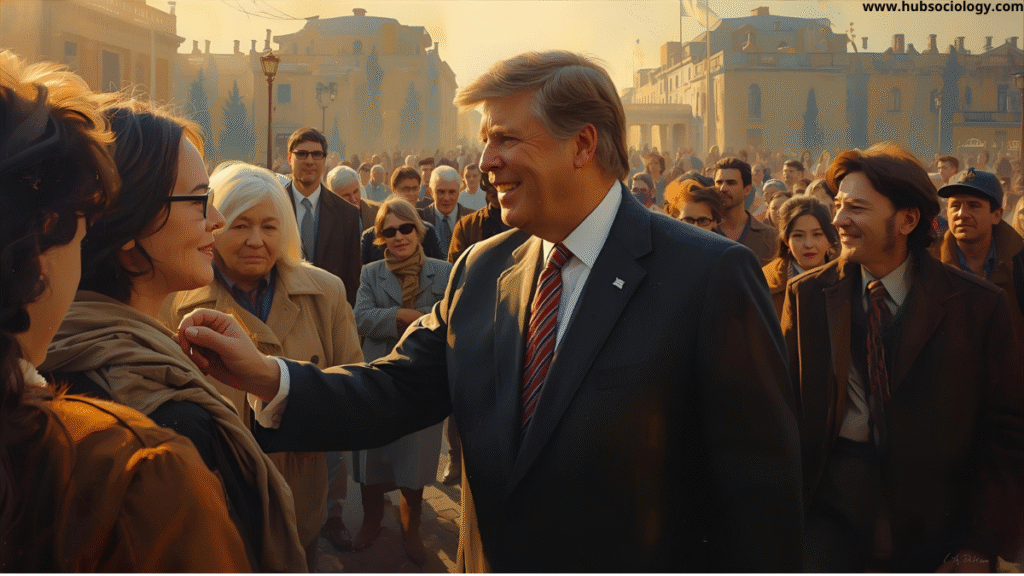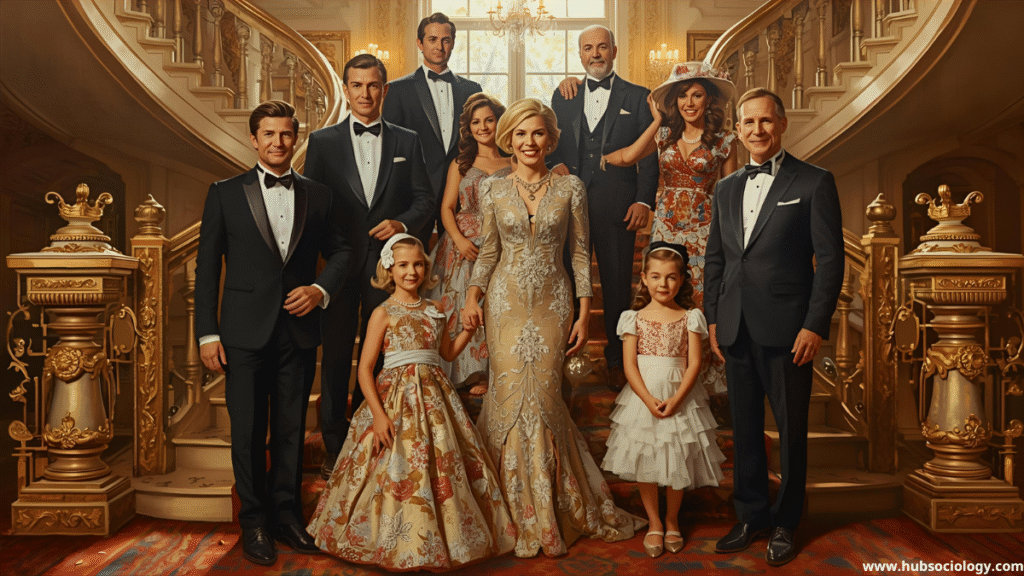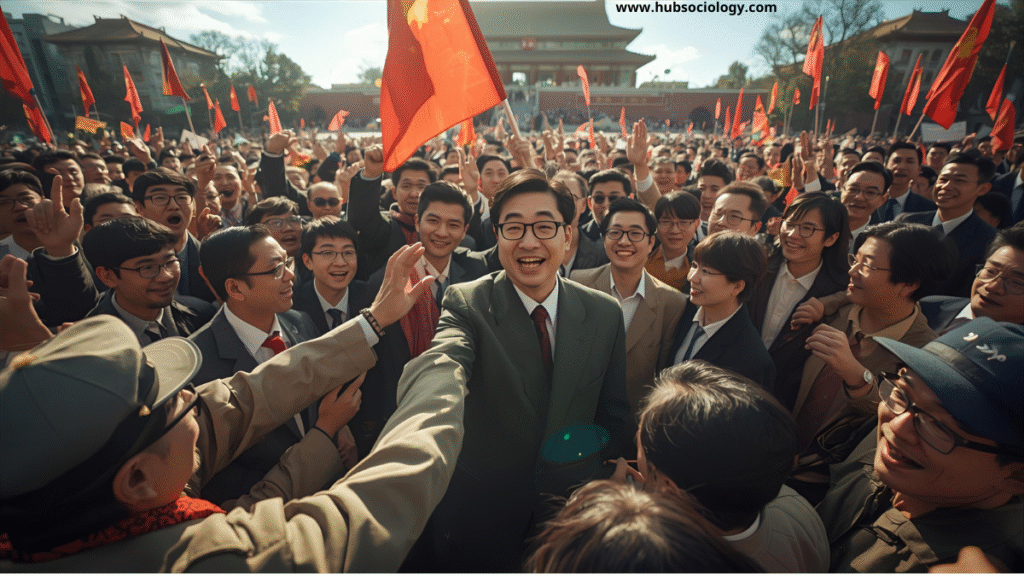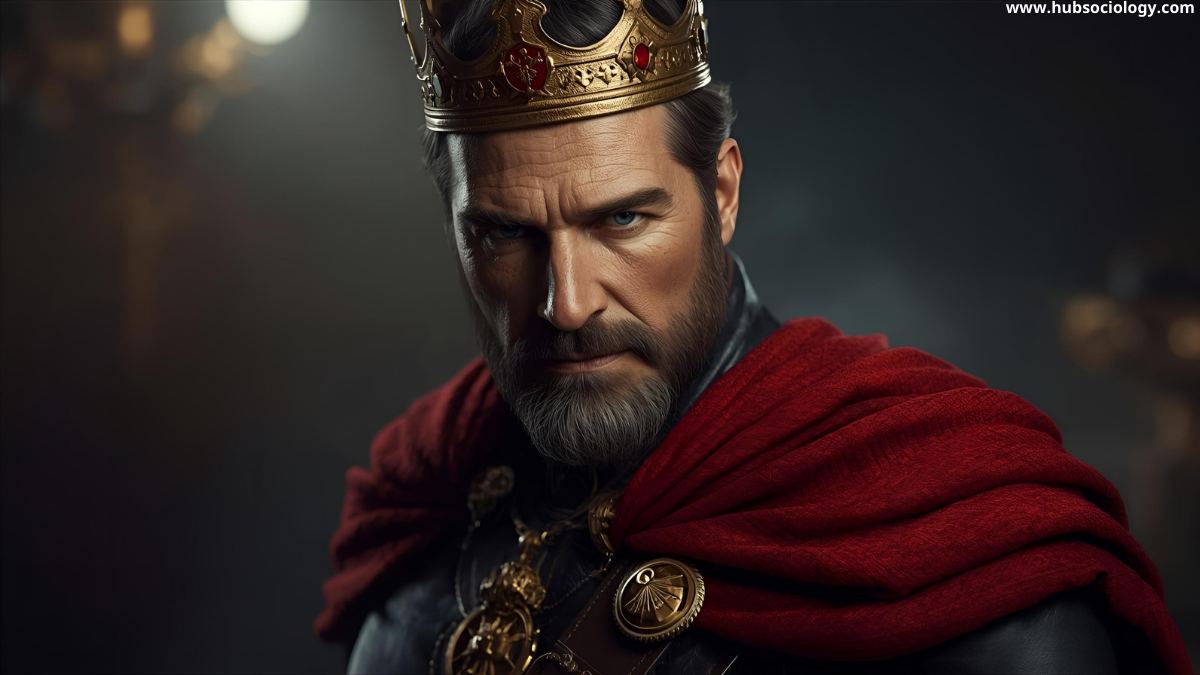Introduction
The study of power, authority, and inequality lies at the heart of sociology, as societies are structured around the distribution of resources and decision-making capacities. Among the most significant contributions to the sociology of power is C. Wright Mills’s theory of the Power Elite, developed in his landmark book The Power Elite (1956). Mills, a radical American sociologist, challenged the dominant narrative of American democracy by arguing that political power was not evenly dispersed among citizens but concentrated in the hands of a small elite. This elite, according to him, was composed of leaders in military, corporate, and political institutions who collectively shaped national and international policies.
The theory is not merely a political commentary but a profound sociological analysis of how structural arrangements create inequalities in power, how elites reproduce their dominance, and how democracy often masks the actual dynamics of decision-making.

Theoretical Background
Mills developed his theory against the backdrop of post-World War II America, when the United States was rising as a global superpower. The Cold War, nuclear arms race, and the expansion of big corporations raised questions about the relationship between citizens and the state. Traditional pluralist theories—most notably advanced by political scientists like Robert Dahl—suggested that power was widely distributed across interest groups, ensuring democratic participation.
Mills strongly opposed this view. He argued that power in modern societies tends to concentrate in hierarchical institutions, which are far removed from the everyday lives of ordinary people. Rather than a democracy of competing interests, modern America was ruled by a triad of elites—corporate executives, military leaders, and top political officials—who coordinated with one another to maintain control.
The Structure of the Power Elite
1. Corporate Elite
Mills identified large corporations as one of the three pillars of elite power. By the mid-twentieth century, the American economy was dominated by big businesses with monopolistic tendencies. Corporate leaders, rather than individual entrepreneurs, made decisions that affected employment, trade, technology, and consumer culture. Their economic power translated into political influence through lobbying, campaign financing, and control over media narratives.
2. Political Elite
The second component of the triad is the political leadership. For Mills, the growth of the centralized state, bureaucracy, and executive power had fundamentally altered democracy. Elected officials and bureaucrats were not truly accountable to the public but often operated in alliance with corporate and military leaders. Moreover, the concentration of decision-making in the executive branch—especially in foreign policy and national security—gave rise to what Mills termed the “political directorate.”
3. Military Elite
Perhaps the most striking part of Mills’s analysis was the growing importance of the military elite. After World War II and during the Cold War, the United States became a “permanent war society.” The military was no longer an institution activated during crises; instead, it became deeply embedded in the economy and politics. Generals, defense contractors, and Pentagon officials wielded enormous influence, and their close ties with corporations and politicians created what later analysts called the “military-industrial complex.”
Together, these three groups formed a “power elite” that monopolized critical decisions about war, economy, and governance. Ordinary citizens, Mills argued, were left with limited influence over the direction of society.
Characteristics of the Power Elite
Mills identified certain sociological features that sustain the dominance of the elite:

- Institutional Interlocking: The elites do not operate in isolation. Political leaders consult with corporate executives, who in turn rely on military contracts, while retired generals often transition into corporate or political roles. This creates a revolving door between the three spheres.
- Social Homogeneity: The power elite often share similar backgrounds—elite education, high-income families, exclusive clubs, and networks. Their shared socialization fosters common worldviews and mutual trust.
- Concentration of Decision-Making: In critical matters such as foreign policy, economic planning, or war, decisions are concentrated in a small circle of leaders, far removed from democratic debate.
- Manipulation of Public Opinion: Through control of media and cultural institutions, the power elite shapes how ordinary people perceive political and economic realities. What is presented as public consensus often reflects elite interests.
Sociological Implications
Mills’s concept of the power elite has far-reaching sociological implications, especially for the study of inequality, democracy, and social change.
1. Democracy and Inequality
Mills revealed the contradictions within democratic societies. While democracy assumes broad citizen participation, in practice, decisions are concentrated among elites. This highlights how structural inequalities in wealth and power undermine the ideal of political equality.
2. Alienation and Political Apathy
For ordinary citizens, the existence of a power elite leads to alienation and political apathy. People may vote or engage in civic activities, but they sense that real decisions are made elsewhere. Mills argued that mass society, characterized by passive individuals and weak community ties, reinforces elite domination.
3. Class and Power
Mills linked his analysis to broader theories of class stratification. The power elite can be seen as an extension of the ruling class described by Karl Marx, but with more emphasis on institutional interconnections rather than ownership alone. Unlike Marx’s focus on economic class, Mills stressed the institutional power embedded in corporations, the state, and the military.
4. Social Change and Resistance
The theory also raises questions about resistance. If power is concentrated in elite circles, social movements must challenge these structures directly rather than assuming that democratic processes alone will bring change.
Criticisms of Mills’s Theory
Although highly influential, Mills’s theory has also faced criticisms:
- Overgeneralization: Critics argue that Mills exaggerated the cohesion among elites. Conflicts often arise between corporations, political leaders, and military officials, preventing a unified ruling bloc.
- Neglect of Pluralism: Political scientists like Robert Dahl argued that power is more dispersed across interest groups, unions, civil society, and local politics than Mills suggested.
- Determinism: Some scholars believe Mills underestimated the agency of citizens and the possibility of grassroots mobilization to influence policy.
- Historical Context: Mills’s theory was shaped by Cold War America. Some argue it may not fully explain power dynamics in other societies or in contemporary contexts where global corporations and transnational institutions play a major role.
Contemporary Relevance
Despite criticisms, Mills’s theory remains highly relevant. In today’s globalized world, one can observe similar patterns of elite dominance:
- Corporate globalization: Multinational corporations influence policies across nations, shaping trade, environment, and labor conditions.
- Military-industrial complex: Defense spending and security industries remain central in global politics.
- Political-corporate nexus: Lobbying, campaign financing, and corporate influence in elections continue to challenge democratic accountability.
Additionally, issues such as climate change, digital surveillance, and global inequality illustrate how elites dominate decisions that affect billions of lives. Sociologists and political analysts still use Mills’s framework to analyze elite networks, transnational corporations, and global governance institutions.
Conclusion
C. Wright Mills’s theory of the Power Elite provides a critical lens for understanding how power operates in modern societies. By highlighting the interconnected dominance of corporate, political, and military leaders, Mills challenged the optimistic vision of liberal democracy and exposed the structural inequalities embedded in institutions. His work has inspired generations of sociologists, political scientists, and activists to question who truly governs society and how ordinary people can reclaim their democratic agency.

Although written in the 1950s, Mills’s insights resonate strongly in the 21st century, where power continues to concentrate in elite networks on a global scale. From corporate boardrooms to government offices and military headquarters, the sociological reality remains: decisions that shape the lives of millions are often made by a small, interconnected elite. Understanding this dynamic is not only a theoretical pursuit but a critical step toward fostering more equitable and participatory societies.
Do you like this this Article ? You Can follow as on :-
Facebook – https://www.facebook.com/hubsociology
Whatsapp Channel – https://whatsapp.com/channel/0029Vb6D8vGKWEKpJpu5QP0O
Gmail – hubsociology@gmail.com
Exam-style questions
5 Marks Questions (Short Answer)
- Who are the three main groups that constitute the Power Elite according to C. Wright Mills?
- Define “Power Elite” in your own words.
- What role does the military play in Mills’s theory of the power elite?
- Mention two criticisms of C. W. Mills’s power elite theory.
- How is Mills’s concept of the power elite different from pluralist theories of power?
10 Marks Questions (Medium Answer)
- Explain the concept of institutional interlocking in Mills’s theory of the power elite.
- Discuss how corporate elites influence politics according to C. W. Mills.
- Examine the sociological implications of the power elite for democracy and citizen participation.
- Compare and contrast Mills’s theory of the power elite with Karl Marx’s concept of the ruling class.
- Discuss the contemporary relevance of Mills’s power elite theory in the context of globalization.
15 Marks Questions (Long Answer/Essay)
- Critically evaluate C. Wright Mills’s theory of the Power Elite. How far is it applicable in modern societies?
- Discuss the structural features and characteristics of the power elite as explained by Mills.
- Analyze the impact of the power elite on democracy and political participation with sociological examples.
- How does Mills’s theory of the power elite help us understand the relationship between economy, politics, and the military in society?
- To what extent can Mills’s theory of the power elite be applied to the study of global power structures in the 21st century?
